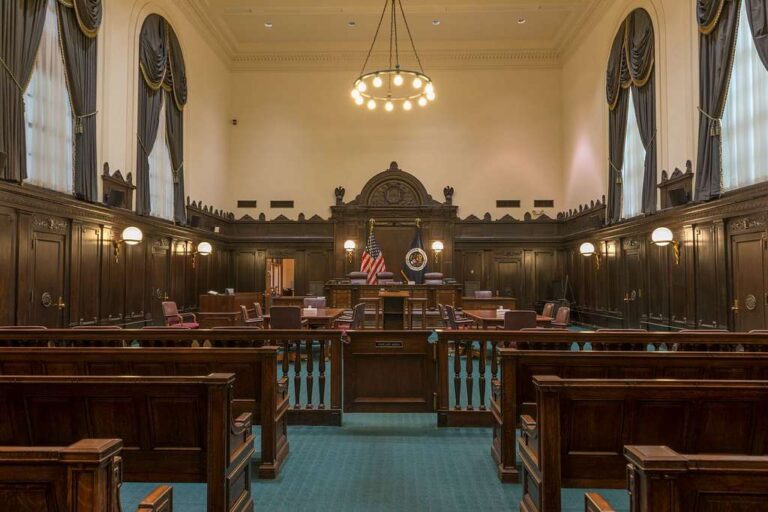Jon Weinberg is a student at Harvard Law School.
While Uber drivers and workers in the gig economy continue to fight to be re-classified as employees, current California Lyft drivers are in the midst of a different legal battle– over a proposed settlement in a prominent classification suit that would award drivers damages and job protections but maintain their independent contractor status. The initial proposed settlement was recently rejected by presiding U.S. District Judge Vince Chhabria as monetarily inadequate since drivers would have received an average of $56.14 each, while employee status is estimated to be worth on average $835 per driver for the four-year period that would have been covered by the settlement.
The proposed settlement in Cotter v. Lyft would have paid $12.25 million to current California Lyft drivers who do not opt out of the settlement and would have amended Lyft’s terms of service to give drivers termination protections, but the settlement also would have released driver claims arising from their misclassification as independent contractors from between May 2012 and the date of the preliminary approval of the settlement. The proposed settlement was scrutinized and later rejected by Judge Chhabria for its monetary inadequacy. But while Judge Chhabria rightly rejected the contention of the Teamsters union and other objectors that the settlement would represent an endorsement of the illegal classification of drivers, the judge’s characterization of the underlying classification question as ambiguous is troubling.
The Proposed Settlement and Justification
Cotter v. Lyft is a federal class action in the Northern District of California brought by attorneys Shannon Liss-Riordan and Matthew Carlson on behalf of California Lyft drivers challenging Lyft’s classification of the drivers as independent contractors. The lawsuit also seeks benefits, expense reimbursements and other damages. In January, Lyft agreed to a proposed settlement which can be found here.
Monetarily, the proposed settlement would have provided for a $12,250,000 non-revisionary Settlement Fund which would have been distributed to class members, less attorney’s fees and representation fees, based on a point system rewarding drivers based upon the amount of time they drove for Lyft. Drivers would have received an estimated average of $56.14 each, while plaintiffs’ lawyers would have collected a third of the settlement, or $3.67 million.
With respect to non-monetary terms, the proposed settlement would have limited Lyft’s ability to terminate drivers to “specific, delineated reasons or after providing notice and an opportunity to cure.” The agreement would have provided for an arbitration process through which drivers can contest terminations, and also would have required Lyft to provide more information about potential passengers to drivers, noting drivers “will be able to reject ride requests without fear of deactivation.” The settlement would have also required class members to release claims resulting from their wrongful classification from between May 2012 and the date of the preliminary approval of the settlement.
Shannon Liss-Riordan justified the settlement in an extensive statement provided to OnLabor. She called the monetary amount of the settlement “a good resolution to the case” due to the strength of Lyft’s driver arbitration clause. Since Lyft had drivers sign agreements to arbitrate disputes and waive their right to class actions, and Liss-Riordan didn’t believe she could successfully invalidate the agreements, she didn’t believe the suit would survive dismissal. She conceded the settlement would not have achieved reclassification but highlighted the proposed termination procedure and neutral arbitration process as important driver gains. Finally, Liss-Riordan defended settling with Lyft despite continuing to pursue her case against Uber because of the inability to invalidate Lyft’s arbitration clause and because “We have not been hearing so many concerns from Lyft drivers, which leads us to believe that Lyft is treating its drivers with more respect than Uber is treating its drivers.”
Scrutiny and Rejection of the Proposed Settlement
The proposed settlement was not to be. Soon after the settlement was announced, Judge Chhabria directed the parties to answer several questions in writing, including whether the settlement’s terms were “contrary to the original goal of the lawsuit” by making drivers more like independent contractors, and if “there any factors specific to Lyft’s business model that preclude it from classifying drivers as employees.”
Resulting documents showed that “drivers who worked for ride-hailing service Lyft in California during the past four years would have been entitled to an estimated $126 million in expense reimbursements had they been employees rather than contractors.” That’s an average of $835 per driver, and only for the four-year period of the settlement without considering the value of employee status going forward. In addition, the Teamsters and a group of Lyft drivers objected to the settlement (here). The objectors attacked the adequacy of the monetary value of the settlement but additionally highlighted the ramifications of what they called a “judicial endorsement of the calculated restructuring of the employment relationship in a manner that deprives Lyft drivers of rights guaranteed by state and federal law.” The objectors asserted the drivers are in fact employees and that misclassification leads to significant costs for both drivers and the public. In contrast with the view of the parties, the objectors stated that “the proposed settlement, its global release, its imposition of continued misclassification, and its establishment of processes that hinder the resolution of misclassification through judicial and administrative enforcement are all reasons to deny the proposed settlement.”
At a hearing on March 24th, Judge Chhabria heard from the objectors and questioned the size of the settlement, asking if the premium for full-time drivers was high enough and noting potential damages may have doubled from the originally-estimated $70 million. Judge Chhabria did appear to favorably view the nonmonetary terms of the settlement despite noting that the proper classification of drivers was a real issue. Importantly, “both parties agreed at the hearing that [the settlement] does not prevent drivers from bringing similar lawsuits again in the future.”
Last week, Judge Chhabria decided not to approve the proposed settlement. Judge Chhabria’s Order can be found here. He noted the significant monetary inadequacy of the settlement and that “the modest nonmonetary relief set forth in the agreement does not come close to making up for these serious defects in the monetary aspect of the settlement.”
Judge Chhabria also, however, acknowledged that “at the trial itself, the plaintiffs face a significant risk that a jury would find the drivers to be independent contractors under California law” and that with respect to California’s multi-factor test for classification “some factors point one way, some factors point the other way, and many factors seem outdated and irrelevant.” He said that “the risk is particularly acute for people who drive only sporadically and part time for Lyft. In contrast to people who drive full time and rely on their work for Lyft as their primary source of income, a jury might be reluctant to conclude that Lyft “employs” people who only give occasional rides when their schedules permit.”
The Proper Classification of Lyft Drivers
Given the considerable monetary and non-monetary benefits associated with employment status, an average pay-out of $56.14 per existing California Lyft driver was inadequate. But there is little doubt that Liss-Riordan’s calculus as to the probability of invalidating Lyft’s driver arbitration clauses was reasonable. And the Teamsters and objectors do overstate the significance and precedential value of the settlement – class members would have indeed released claims ensuing from their wrongful classification from between May 2012 to the date of preliminary approval, but would not have consented to their wrongful classification nor would they have waived claims from the date of approval onward. The settlement also would not preclude legislative or regulatory remedies. Hopefully, a revised settlement can be reached.
But even if Judge Chhabria ultimately approves a settlement that does not result in re-classification of drivers as employees, that should not prejudge the ultimate legal question concerning classification. As Professor Sachs has argued (here and here), and as others agree, Uber and Lyft drivers are properly classified as employees as a matter of law, irrespective of driver “flexibility” and hours worked. No matter how benevolent of an employer Lyft may be, the fact remains that Lyft is an employer under California Labor Law and should be recognized as such.






Daily News & Commentary
Start your day with our roundup of the latest labor developments. See all
November 28
Lawsuit against EEOC for failure to investigate disparate-impact claims dismissed; DHS to end TPS for Haiti; Appeal of Cemex decision in Ninth Circuit may soon resume
November 27
Amazon wins preliminary injunction against New York’s private sector bargaining law; ALJs resume decisions; and the CFPB intends to make unilateral changes without bargaining.
November 26
In today’s news and commentary, NLRB lawyers urge the 3rd Circuit to follow recent district court cases that declined to enjoin Board proceedings; the percentage of unemployed Americans with a college degree reaches its highest level since tracking began in 1992; and a member of the House proposes a bill that would require secret ballot […]
November 25
In today’s news and commentary, OSHA fines Taylor Foods, Santa Fe raises their living wage, and a date is set for a Senate committee to consider Trump’s NLRB nominee. OSHA has issued an approximately $1.1 million dollar fine to Taylor Farms New Jersey, a subsidiary of Taylor Fresh Foods, after identifying repeated and serious safety […]
November 24
Labor leaders criticize tariffs; White House cancels jobs report; and student organizers launch chaperone program for noncitizens.
November 23
Workers at the Southeastern Pennsylvania Transportation Authority vote to authorize a strike; Washington State legislators consider a bill empowering public employees to bargain over workplace AI implementation; and University of California workers engage in a two-day strike.